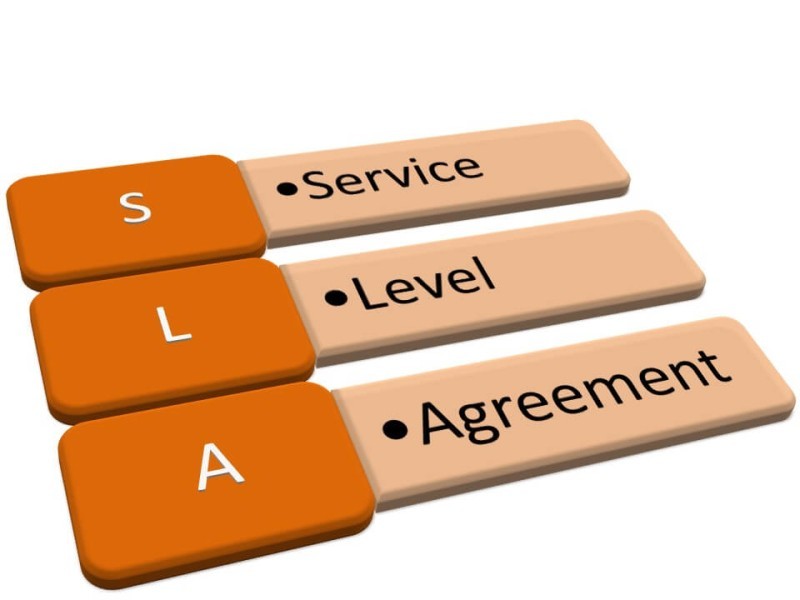IT Service Level Agreements (SLAs) and Performance Measurement
- 12 jul, 2023
- 4290 visitas
IT Service Level Agreements (SLAs) are contractual agreements between an IT service provider and its customers or stakeholders. SLAs define the expected level of service, performance metrics, responsibilities, and remedies in case of service failures. Performance measurement is a critical component of SLAs, as it enables organizations to assess and monitor the service provider's performance against agreed-upon targets. Here are key aspects and best practices for IT SLAs and performance measurement:
Clear and Measurable Metrics: Define clear and measurable performance metrics in the SLA that align with the organization's objectives and customer expectations. Metrics may include availability, response time, resolution time, uptime percentage, customer satisfaction, and other key performance indicators (KPIs) relevant to the specific IT services being provided.
Establish Baselines and Targets: Establish baseline performance levels and set realistic targets for each defined metric. Baselines serve as a reference point for measuring improvement or decline in performance, while targets set the desired level of service. Targets should be achievable, taking into account factors such as technology limitations, resource constraints, and industry benchmarks.
Reporting and Documentation: Ensure that performance measurement activities are well-documented and reported regularly. This includes capturing data related to service performance, tracking progress against targets, and providing periodic reports to stakeholders. Reports should be clear, concise, and easily understandable, providing insights into performance trends and highlighting areas that require attention.
Regular Performance Reviews: Conduct regular performance reviews with the service provider to discuss SLA compliance, review performance metrics, and address any concerns or issues. These reviews provide an opportunity to identify areas of improvement, refine service expectations, and ensure alignment with evolving business needs.
Service Level Reporting: Implement a structured service level reporting process that communicates performance results to stakeholders. This can include dashboards, scorecards, or executive summaries that present performance data in a visually appealing and easily digestible format. Regular reporting enhances transparency, accountability, and trust between the service provider and the customer.
Escalation and Remediation Procedures: Define clear escalation and remediation procedures in the SLA to address service failures or breaches of agreed-upon targets. These procedures should outline the steps to be followed, the responsible parties, and the expected resolution timeframes. Establishing an escalation matrix helps expedite issue resolution and minimizes the impact on service delivery.
Continuous Improvement: Use performance measurement data to drive continuous improvement efforts. Analyze performance trends, identify root causes of service deficiencies, and collaborate with the service provider to implement corrective actions. Continuous improvement ensures that the IT services align with evolving business requirements and remain in line with industry best practices.
Collaboration and Communication: Foster a collaborative relationship between the customer and the service provider. Regular communication and feedback exchanges help ensure shared understanding of expectations, provide an opportunity to address concerns, and promote a customer-centric approach to service delivery. Open lines of communication enhance problem-solving and facilitate prompt resolution of issues.
Vendor Management: If the IT service is outsourced to a vendor, establish effective vendor management practices to monitor and evaluate the vendor's performance against SLA targets. This includes conducting vendor performance reviews, maintaining regular communication, and addressing any contractual or service-related concerns through effective contract management.
Periodic SLA Review and Revision: Regularly review and revise SLAs to align with changing business needs, technological advancements, and customer requirements. SLAs should be flexible enough to accommodate evolving expectations and incorporate lessons learned from previous performance measurement cycles. Collaboration between the customer and service provider during SLA reviews ensures that the agreements remain relevant and effective.
By implementing well-defined SLAs and robust performance measurement practices, organizations can establish clear service expectations, monitor service provider performance, and drive continuous improvement. Effective SLAs and performance measurement foster accountability, transparency, and customer satisfaction, ultimately supporting the organization's overall IT service delivery and business success.
- Categoría:
- Arte y cultura
- Sin comentarios



